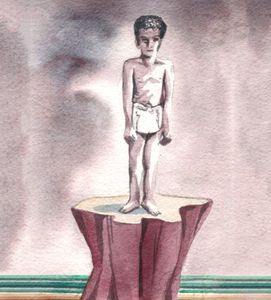By the time this is published, the crisis over the 200 villagers being held hostage by the Naxalites would, presumably, have played itself out. But the fundamental problem will persist.
Certainly, the UPA government floundered despite its prime minister Manmohan Singh having declared Naxalism the most serious internal security threat India faced. But to go by the speech that Narendra Modi made in south Bastar even as the hostage crisis was unfolding, the BJP seems, like the Bourbon kings, to have forgotten nothing and learned nothing.
The ridiculous suggestion that the answer to Naxalism lay in building steel mills took one’s breath away. Even a schoolchild would know that much of tribal anger has been against projects―hydroelectric dams and mining ventures such as Posco and Vedanta in Odisha―that displace huge numbers of tribals and lead to an influx of outsiders into tribal lands, resulting in the natives becoming refugees in their traditional tracts.
The erstwhile Planning Commission, in the Twelfth Plan document, estimated that since independence, about 65 million indigent people, mostly tribals, had been displaced by so-called “development” projects. For such poor people, development is not desirable but disruptive.
What they want is “participative development”, where their elected leaders are empowered to determine the priorities of the community, with the approval of the respective gram sabhas. They want to be enabled through the devolution of the three Fs―functions, finances and functionaries―to plan their own development programmes.
This is their constitutional right as spelled out in Part IX of the Constitution and as determined in the only legislation the Constitution has mandated: The Provisions of the Panchayats (Extension to Scheduled Areas) Act, 1996.
Though the legislation has been on the statute books for nearly 19 years, and all states concerned have passed the conformity legislation ages ago, implementation (except, to some extent, in Maharashtra) has varied from weak to non-existent. Freedom, therefore, is yet to reach tribal India.
The worst scene is in Gujarat, where the share of the tribal population is almost same as the all-India average of 8 per cent. And, it is this 8 per cent that has had to bear the bulk of the tragedy of dispossession. The share of tribals displaced in the state is an appalling 76 per cent.
This is the basis of the “Gujarat model”: rob the poorest of their land and give it dirt cheap to the rich. Modi is bent on replicating this model throughout India. Hence, his extraordinary statement to Dainik Jagran that the BJP made a “mistake” in supporting the 2013 Land Acquisition Act.
Modi does not understand that to win the war against Naxals, the priority must be not intensified counter action but winning over the tribals with administrative and financial empowerment, not leaving them at the mercy of the Adanis, Ambanis, Agarwals and Tatas.
For the past seven years at least, the report of the D. Bandyopadhyay Committee, which went into these issues with a fine-tooth comb, has been gathering dust in the Planning Commission, now renamed the NITI Aayog. The report clearly pointed to the absence of administration in the tribal jungles that created the vacuum into which the Naxals were sucked.
The Naxal presence was tragically much better than the state administration the tribals had seen in the corrupt forest guards, heartless petty bureaucrats and swindling contractors.
Modi now advises the Naxals to talk to the orphaned child of any one of the tribals killed by them. I would advise Modi to ask one of the displaced tribals how he feels about being deprived of his home and hearth, the clean water in the streams that ran near his village, the fruits of the jungle that provided food, fuel and fodder, the grazing fields for the animals, and the joy of their customs, songs and dances―all of which are threatened by Modi and his fat-cat cohorts.
Aiyar, former Union minister, is an MP and a social commentator.


